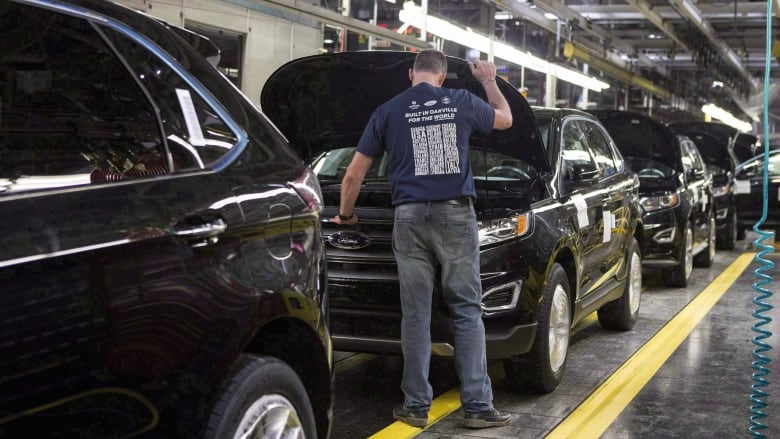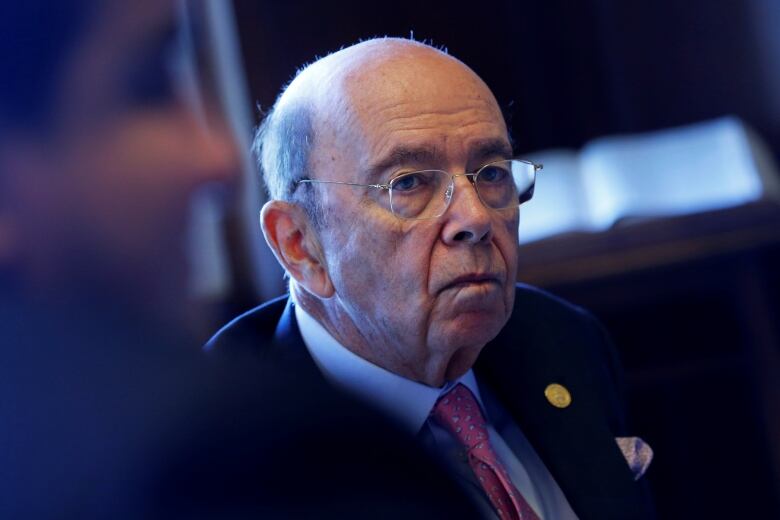Chief Canadian NAFTA negotiator not expecting progress on auto content rules
U.S. looking at raising the North American content to more than 70%, say American reports

Despite tough talk from the U.S. about the job-killing impact of NAFTA on its automotive sector, Canada's chief negotiator isn't expecting to see a detailed American proposal on the matter during the latest round of talks to rewrite the continental trade pact.
- U.S. unlikely to accept NAFTA gender chapter with teeth: trade experts
- U.S. slow to present specifics on key NAFTA demands
- LISTEN :Inside Canada's efforts to inject climate change into NAFTA 2.0
Rules of origin will be "a subject for discussion but we're not expecting to see anything radically new at this point," Steve Verheul said Saturday.
Verheul made the comment as he arrived for the start of the third round of negotiations, the first at which Canada is playing host.
Concern has been mounting among trade experts that the year-end deadline for revamping NAFTA will be impossible to meet if negotiators don't start during this round to confront some of the most contentious issues, rules of origin prime among them.

Asked if he expects anything radically different on any file, Verheul said: "We'll really have to see. It's too early, I'm just walking in now."
Under NAFTA's current rules of origin, vehicles must have at least 62.5 per cent North American content to qualify for duty-free movement between Canada, the U.S. and Mexico.
U.S. looking to add steel, electronic provisions
At the opening round of negotiations in Washington last month, U.S. Trade Representative Robert Lighthizer pronounced that the North American content requirement must be raised and a specific American content requirement must be added, along with a way to verify that content.
But the U.S. has yet to provide any details.
Reports in the U.S. suggest the Americans are looking at raising the North American content to more than 70 per cent and adding a specific U.S. content requirement of anywhere from 35 to 50 per cent.
They are also looking to add steel and electronics, not currently covered by NAFTA, to the list of auto parts whose origin must be traced and accounted for under the content requirement.

On the eve of the third round, U.S. Commerce Secretary Wilbur Ross published a column in which he blasted NAFTA for allowing outside countries to provide parts for vehicles that aren't covered by the content requirement likely an allusion to the rapidly increasing amount of electronic components which are primarily produced in China, Japan and Germany.
He cited a new study which found the American content of manufactured goods, specifically autos, imported from Canada and Mexico has dropped "significantly" since NAFTA went into effect in 1994.
"If we don't fix the rules of origin, negotiations on the rest of the agreement will fail to meaningfully shift the trade imbalance," Ross wrote.
"Our nation's ballooning trade deficit has gutted American manufacturing, killed jobs and sapped our wealth."
'Doubtful' of signing off on environment chapter during this round
For all that, Verheul's comments suggest the Americans still aren't ready to show their hand.
Canadian officials believe resolving American concerns about the exodus of automotive jobs to low-wage Mexico is the key to staving off U.S. President Donald Trump's threat to rip up NAFTA.
But while the Americans are focusing on the content requirement to remedy the problem, Canadian officials believe it would be more effective to set more stringent labour and environmental standards, which would raise wages and production costs in Mexico to levels closer to those in Canada and the U.S.
Verheul said it's "doubtful" negotiators will be able to sign off on the environment chapter during this round, which an American official had earlier suggested was possible.
Ottawa rolls out school buses for U.S. and Mexican teams
The negotiations are being held in Ottawa's former city hall, which is now part of Global Affairs Canada's turf.
While the building is in a scenic location on Sussex Drive at the junction of the Ottawa and Rideau rivers, there are no hotels in the immediate vicinity.
Nor does the building have a restaurant or other amenties to cater to the negotiators. And there are none nearby.
So, the Canadian governmenthoused the visiting negotiators in a variety of hotels around the national capital and even across the river in Gatineau, Que.'
It used yellow school buses to transport them Saturday from their hotels to the venue for the talks.
And it served them boxed lunches.
Canadian officials say it was a scramble to get a conference site and hotel rooms for all the members of each country's delegation after the dates for the third round were confirmed just two weeks ago.

There are some 200 people in the U.S. delegation and 160 in Mexico's. This being their home turf, Canada's delegation numbers almost 300 this time, but they at least are able to sleep in their own beds.
In each of the first two rounds, held in Washington and Mexico City respectively, the visiting countries' negotiating teams were put up in the same hotel at which the talks took place.
That allowed them easy access to each other and to restaurants and bars within the same facility.
Whereas there are typically months between rounds in most trade negotiations, the NAFTA rounds are being held roughly two weeks apart in a bid to reach a deal by the end of the year a deadline many trade experts believe it will be impossible to meet.
In what may be a subtle reminder to the Americans that Canada has other trade options should President Donald Trump follow through on his threat to rip up NAFTA, a large banner is hanging in the corridor through which the negotiators must walk.
It trumpets the success of the Canada-European Union free trade agreement, which went into effect last week, and is covered with celebratory messages from Canadian trade officials who were involved in those protracted talks.
"At last!" reads one message, signed by Verheul.












_(720p).jpg)


 OFFICIAL HD MUSIC VIDEO.jpg)
.jpg)



























































































